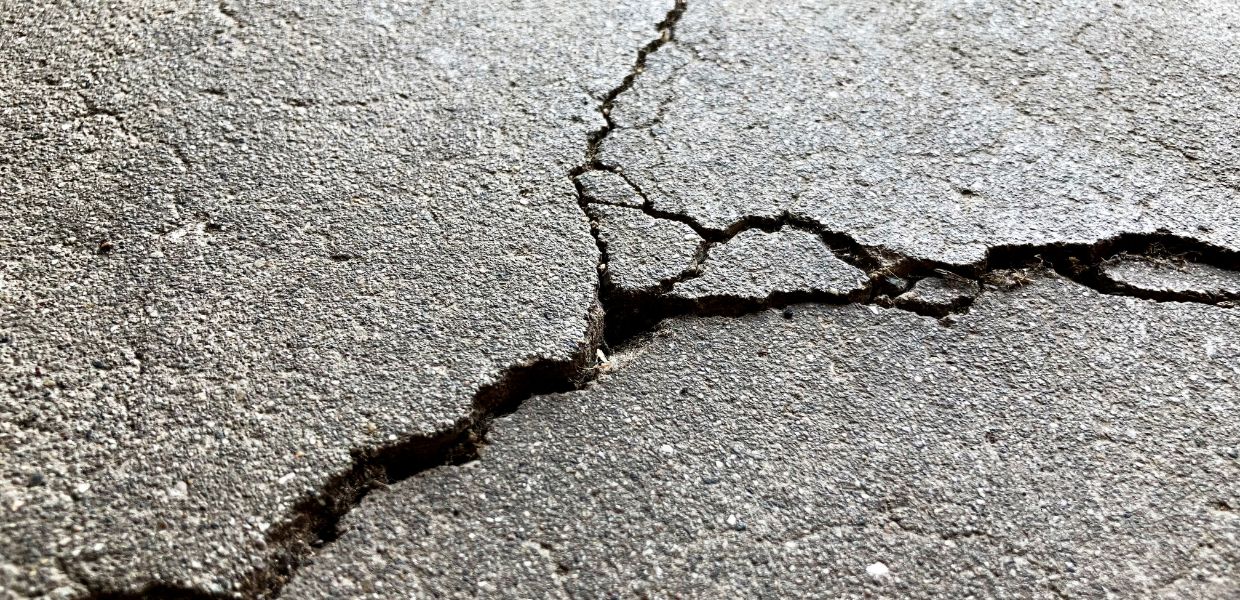In our new Q&A series, we answer some of the most common questions about groundworks starting with queries about concrete cracks in car parks, service yards and footpaths.
What has caused the concrete to crack?
There are many reasons why concrete can break up including:
- Poor design – the original design of the concrete slab may not be appropriate for the loading or usage. The wrong thickness, strength or reinforcement can all contribute to failing concrete slabs.
- Poor installation – installing concrete can be challenging and that risks various things going wrong. For example, if the ground has not been prepared properly, this will cause issues further down the line. If the reinforcement isn’t installed correctly this can also result in problems.
- Damage and use – even if the concrete has been installed correctly, accidents and mistakes can happen. Running large vehicles or plant over slabs that haven’t been designed for them can cause damage. Similarly, constant use over long periods of time can eventually wear the concrete, as it would with any surface.
Will it matter if the cracks aren’t repaired?
Left untreated, concrete cracks will get worse over time and can become unsafe and lead to bigger issues.
In areas where people walk, defective concrete could become a trip hazard, causing injuries and potential liability issues. Inside buildings, even small cracks in the floor can collect dirt and debris, potentially compromising quality or hygiene.
Cracks in a service yard can grow into potholes, collecting water and dirt, causing damage to plant and equipment.
Can I just replace the damaged sections of concrete?
In some cases, it is possible to only replace the damaged sections rather than the whole slab. This will, however, depend on what is causing the problem. For example, a large structurally sound slab with an isolated patch of damage is likely to be able to have a sectional repair. There are factors that need to be considered, like if the sub-base has been affected or if the new section can be adequately tied in, but it is possible.
If the cracks are only small, is there a solution that can repair them quickly?
If the damage is minimal, a sealing repair can be used in the right circumstances. This involves injecting a specialist chemical joint sealant into the cracks.
This solution can be expensive but there are benefits for certain types of businesses and industries. A sealing repair can prevent disruption and downtime as there is no need for any major construction work. It is also ideal for facilities where hygiene and cleanliness are priorities ensuring cracks that can hold harmful dirt or debris are filled.
When would I need to consider replacing the whole slab?
If the cracks have been caused by poor design, installation or workmanship (or all of the above), then often the only solution is to replace the whole slab. Although this may seem drastic, in the long term, it can be the most cost-effective solution as some slabs may just beyond economical repair. For instance, if the sub-base beneath hasn’t been prepared suitably, the slab will continue to fail and any options for remedial work would just be prohibitively expensive. While the upfront cost of replacement may be initially higher, the long term costs and benefits can often far outweigh them.




